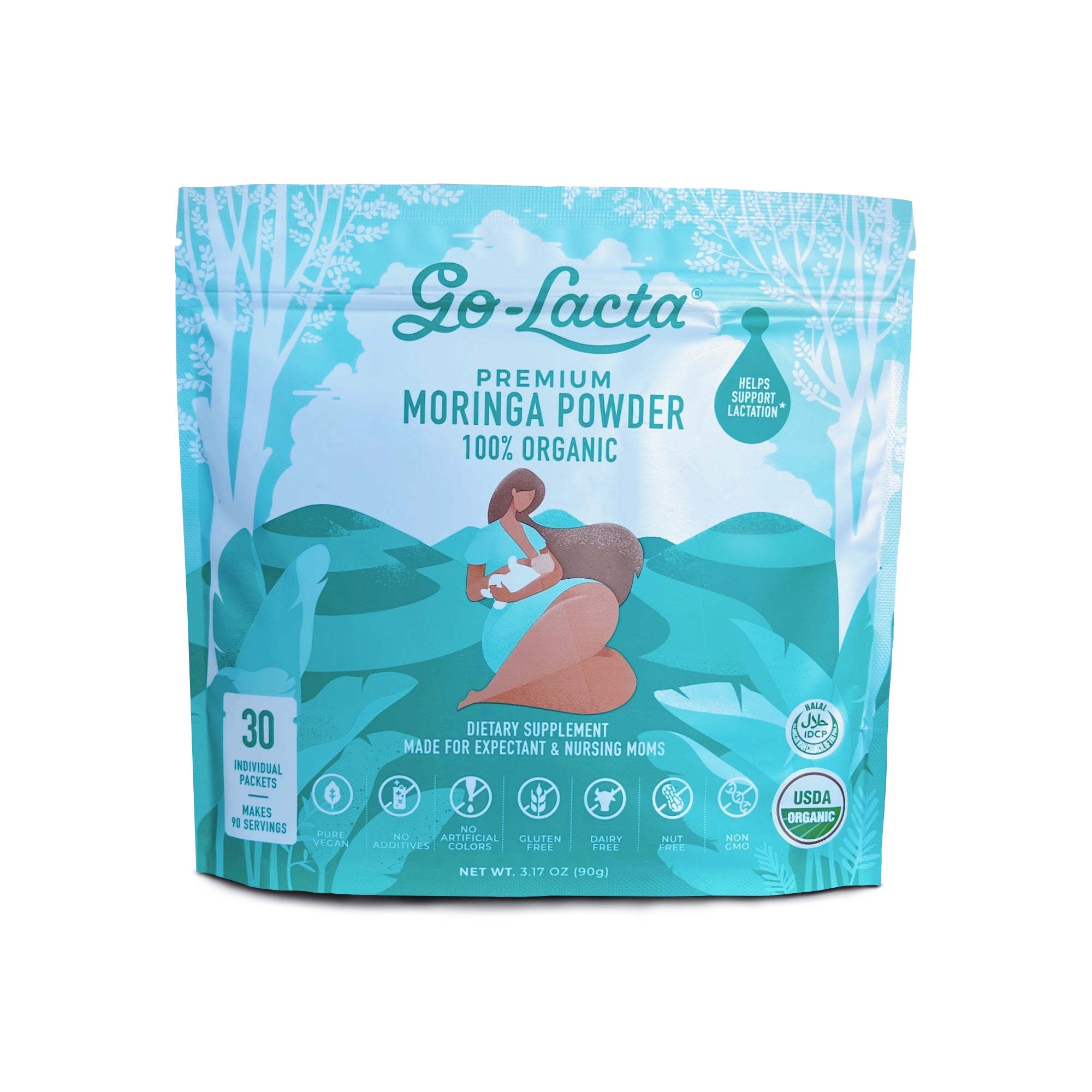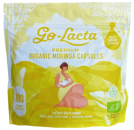
Galactagogue - What is it and How Does it Increase Breast Milk Supply?
In the circle of life, one of the most beautiful, surreal moments is when a new mother is breastfeeding her baby. It’s a wholesome, wondrous moment for any mom. But what happens when the mom feels like she’s not producing enough breast milk? The anxiety can be overwhelming, and it may feel like she’s failing her baby. However, to all the mothers going through this, please know you’re not alone! Many breastfeeding women face this challenge. The good news is that there are natural aids that can help increase milk production. Understanding the options you have to support milk production can give you the confidence and tools you need to nourish your baby. One of the most effective solutions is the use of galactagogues. Continue reading to learn what these are, the available types, and how they can support your breastfeeding journey.
Understanding Breast Milk Supply
Before diving into galactagogues, let’s discuss how human lactation and your breast milk supply work. Milk production operates on a supply-and-demand basis. The more milk your baby removes, the more your body will produce. However, your supply may decrease if the milk isn’t removed efficiently.
How Breast Milk is Produced
Breast milk production occurs within the alveoli. These grape-like clusters are cells within the breast, resembling highways for breast milk. When the baby suckles, your body releases prolactin, which signals your breasts to produce more milk. The milk ejection reflex, also known as “letdown,” is another critical component. It ensures that milk flows freely, making it easier for your baby to nurse. The USDA has a helpful article that goes into depth about this subject.
Factors Affecting Low Milk Supply
Several factors can influence a mother’s low milk supply. Understanding these can help identify and address potential issues that may decrease milk supply. The three most common factors are:
- Stress: Stress is a significant culprit in low milk supply. When a mother experiences high stress levels, her body releases hormones like cortisol, inhibiting milk production hormones.
- Medical Conditions: Certain medical conditions can reduce milk production. For example, an underactive thyroid can disrupt hormone balance, affecting milk supply. Hormonal imbalances associated with PCOS can also impact milk production. Even uncontrolled blood sugar levels can affect milk supply.
- Breast Surgery: Previous breast surgeries, such as reductions or augmentations, can influence milk supply. These surgeries may affect the amount of glandular tissue responsible for producing milk and cause a low milk supply.
It’s important to emphasize that while these factors can influence milk supply, individual experiences may vary. Many women successfully breastfeed despite facing some of these challenges. However, many mothers can improve their milk supply by addressing these factors.
Common Concerns and Myths
It’s common for new mothers to worry about their milk supply. However, not all concerns are valid. Some myths or concerns that breastfeeding mothers have are:
- Soft Breasts: Initially, your breasts may feel hard and engorged as your body builds the milk supply. As breastfeeding begins, your breasts will become softer as your body adjusts to producing milk on demand.
- Breast Size: Contrary to popular belief, breast size does not determine milk production capacity. Small-breasted women can produce ample milk, just as women with larger breasts.
- Frequent Nursing: Babies naturally cluster feed — feeding frequently over a short period, often in the evening. This feeding schedule is normal behavior and doesn’t mean you have a low milk supply.
- Pumping Output: The amount of milk you express isn’t always an accurate indicator of your milk supply. Babies are more efficient at removing milk than electric or hand pumps.
It’s crucial to separate myths from facts and focus on what truly matters — ensuring your baby is getting enough milk.
What is a Galactagogue?
Herbal galactagogues are any food or herb that increases milk production. Some forms are also available in certain medications. The term might sound complicated, but the concept is simple: An herb or prolactin supplement for breastfeeding, galactagogue food, or prescribed medicine helps boost prolactin levels, the hormone responsible for milk production. For breastfeeding women struggling with low supply, galactagogues can help stop the struggle. But not all galactagogues are created equal. Let’s explore the different types available and how they work.
Types of Galactagogues
Galactagogues come in many forms, from foods and herbal preparations to pharmaceuticals. Each type has its own unique properties and ways of supporting breast milk production. Some work by directly increasing prolactin levels. Others help your body use the nutrients necessary for milk production. Like everything with motherhood, note that what works for one mother might not work for another, so don’t compare your journey to anybody else’s! Understanding the options available can help you make an informed decision.
Foods
Certain foods have been known to support milk production. While scientific evidence is limited, many breastfeeding mothers have found success with these dietary choices. Here’s a close look at some popular options.
- Oatmeal: This classic breakfast food is believed to help boost milk production. Oats are rich in iron, which is vital for maintaining a healthy milk supply.
- Dark, Leafy Greens: Greens like spinach, kale, and broccoli are packed with essential nutrients and vitamins. They provide folic acid and calcium, which help support milk production.
- Fennel Seeds: These seeds have been used for centuries to aid lactation. Fennel seeds contain phytoestrogens, compounds that mimic estrogen in the body and can help stimulate milk flow.
- Sunflower Seeds: Packed with vitamins, minerals, and healthy fats, sunflower seeds are another excellent choice. They also contain critical nutrients, vitamin E and magnesium, both of which support lactation.
Incorporating these foods into your diet can be easy and enjoyable. Whether you start your day with a bowl of oatmeal or snack on sunflower seeds, every bit helps. By adding a variety of these nutrient-rich foods to your meals, you’re taking positive steps to support milk production.
Herbs
Herbal galactagogues have been used for centuries in various cultures to improve milk production and increase milk supply. Many herbs, like these, are believed to help enhance milk production while offering many other health benefits. Here’s a closer look at some of the most popular herbal breastfeeding supplements.
- Fenugreek: Fenugreek is one of the most well-known herbs for boosting milk production. It contains compounds that may help stimulate milk flow by increasing prolactin levels.
- Blessed Thistle: This herb is frequently used in conjunction with fenugreek to enhance its effects. Blessed thistle is believed to support milk production and improve lactation.
- Milk Thistle: Milk thistle is another herb used to aid lactation. It’s thought to have properties that support liver health as well as contribute to better milk production.
- Moringa: Moringa is a nutrient-dense herb often used to support breastfeeding and create a full milk supply. A Moringa capsule for breast milk is packed with vitamins and minerals that benefit both mother and baby. The World Health Organization even supports the use of Moringa in treating malnutrition, highlighting its incredible nutritional value in this article.
- Goat’s Rue: This herb has a long history of use in increasing milk volume and supporting glandular tissue development. Goat’s rue is believed to help stimulate milk production.
These herbs can be added to your daily routine in various ways. They’re available in different forms for ease of use, from making lactation tea for breastfeeding support to capsules and moringa powders. Breastfeeding support has never been more accessible. Before starting any new supplement, consult with your doctor or lactation specialist to ensure it’s suitable for you.
Medications
For some mothers, natural remedies may not be enough. In these cases, medications might be considered. Pharmaceutical galactagogues like Domperidone and Metoclopramide are two forms that are known to help increase milk supply by raising prolactin levels. These medications should be used with caution and only under the guidance of a physician. Medications are typically considered only after other, more natural methods have been tried.
How to Safely Use Galactagogues
When considering the use of galactagogues, safety should be your top priority. This substance works best when combined with other strategies, such as frequent breastfeeding and proper latch techniques. Safety and efficacy go hand in hand. With the appropriate guidance, galactagogues can be a powerful tool in your breastfeeding journey.
Tips to Increase Milk Supply With Galactagogues
To increase milk supply with galactagogues, follow the recommended dosage on the label or as directed by your healthcare provider. Most instructions will state that moms should begin with a low dose and gradually increase it over time as needed. This method allows the body to adjust and cut potential side effects, especially if using medications. Galactagogues work best alongside proper breastfeeding practices, like frequent feeding and proper latching.
Unlocking the Power of Galactagogues
Galactagogues can be a valuable tool in boosting milk supply when used correctly and in conjunction with other breastfeeding practices. Remember, every mother’s experience is unique, so what works for one may not work for another. Always consult with your doctor before starting any new supplement.Are you ready to explore the power of galactagogues? How about discovering the power and benefits of moringa at Go-Lacta? Our premium moringa supplements are designed to support breastfeeding mothers and nourish your baby. Visit our website today to learn more and start your journey to a thriving milk supply.












Leave a Comment
Your email address will not be published. Required fields are marked *